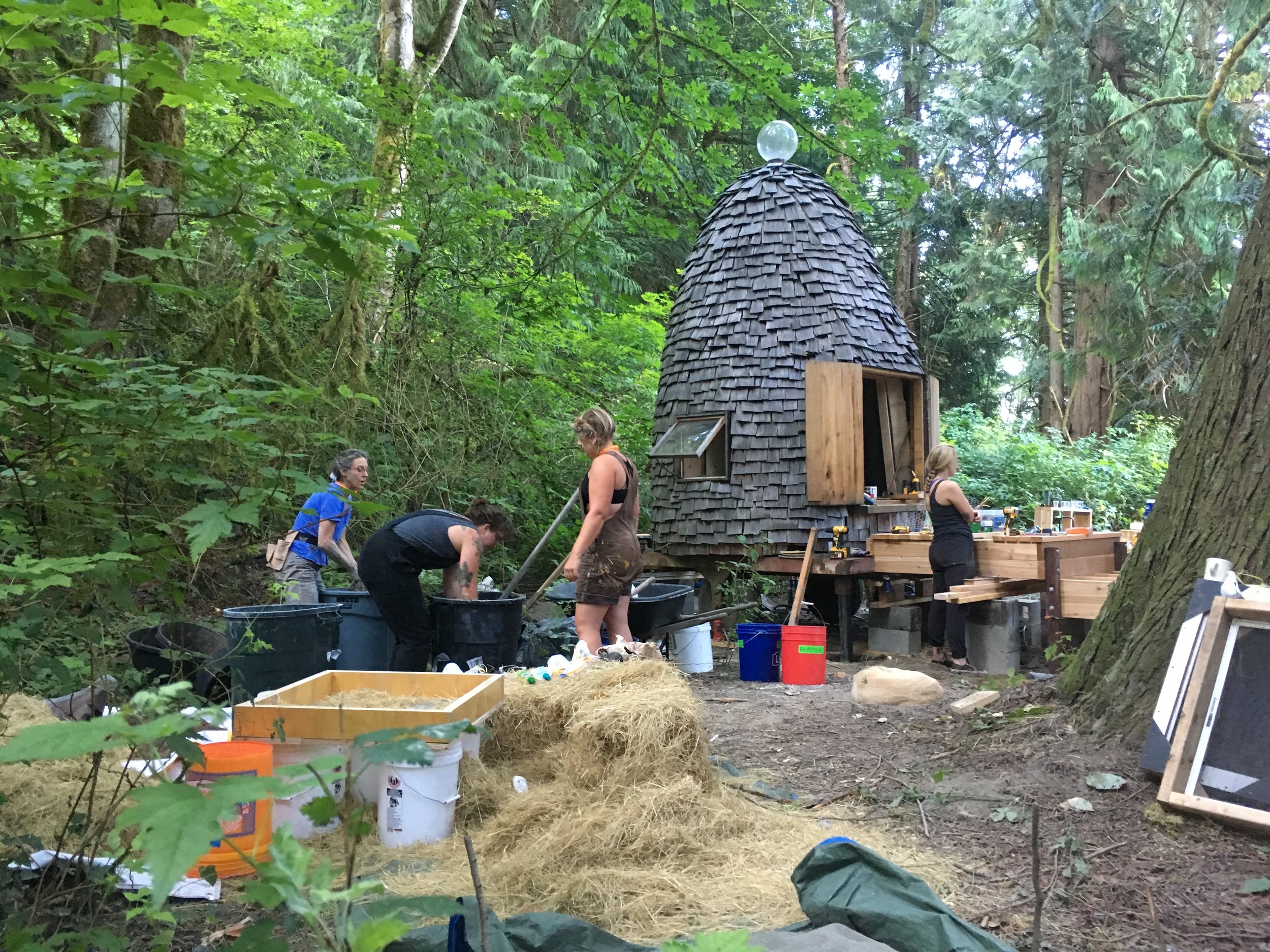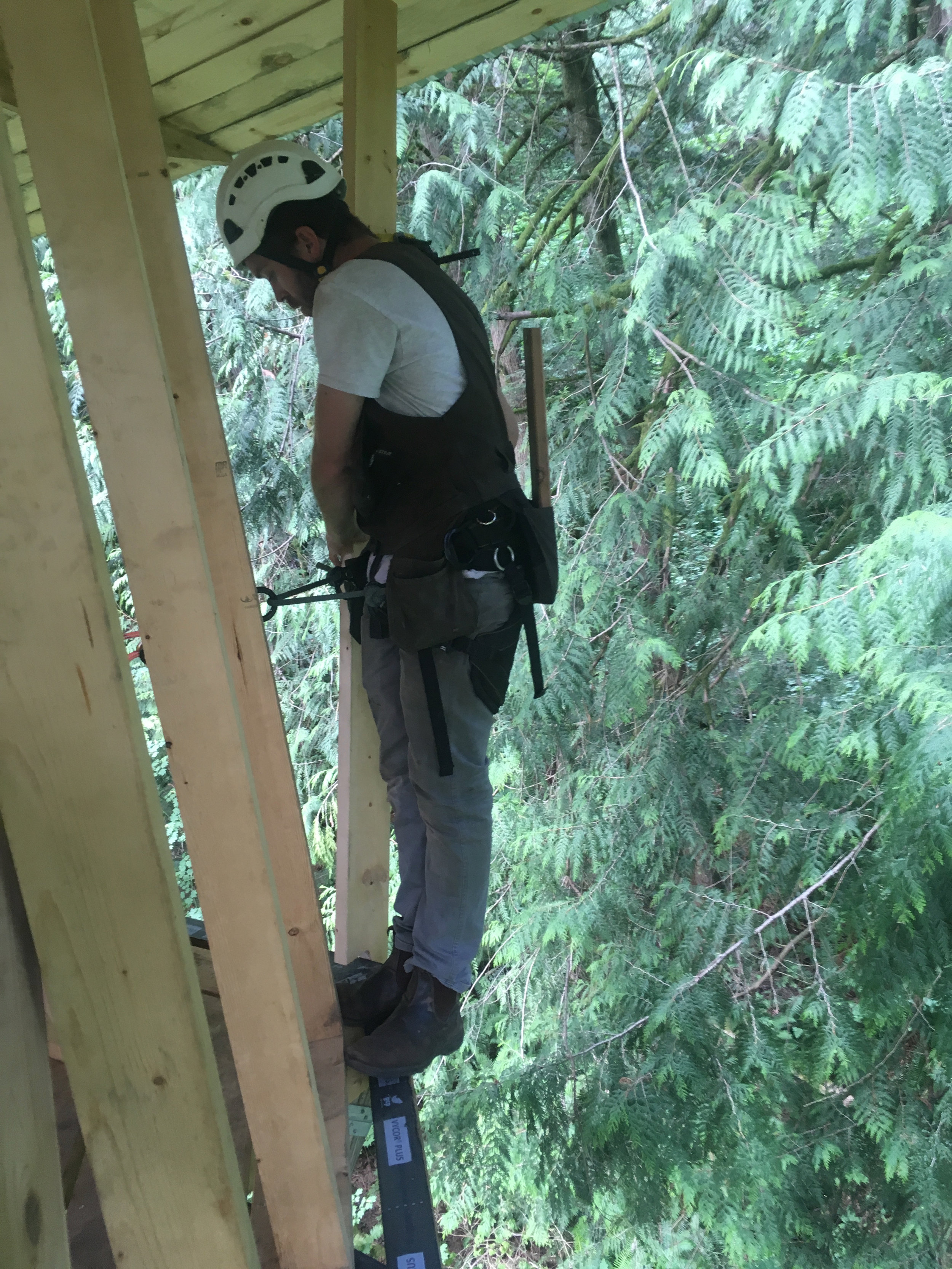“Guerilla building projects. Student led design. A new way of thinking about education, building and work.” - http://sawhorserevolution.org/
Where can you find 360 acres of beauty highlighted by the Stillaguamish River, fresh-baked rustic bread and homemade ice cream, a 30’ high octagonal treehouse, and talented, engaged teenagers and adults building, cooking and playing together?
At the Sawhorse Revolution summer camp, that’s where!
Sawhorse Revolution, a local Seattle non-profit, “envision[s] a future for our students where using a tool is as familiar as using a touchscreen, and one where that knowledge serves as a foundation upon which youth build engaged lives and equitable communities.”
Sawhorse has impacted the lives of hundreds of south Seattle teenagers—not to mention scores of architects, builders, and other community members. With their infectious and effective enthusiasm, compassion, empathy and bold vision, this group of talented and energetic change-makers are engaging in community-focused design and construction, leading a type of revolution needed everywhere. Most of their work takes place in south Seattle, in the neighborhoods where the students live and attend school. Once a year, though, Sawhorse offers a week-long overnight camp to a group of students, and that’s where I got to be part of the magic.
Sawhorse staff recruit professional builders, design professionals and other community members to assist in their school-year programs and at the camp. I volunteered as a camp mentor because I’m currently working on an initiative in Duluth called Outside the Box which has a mission similar to Sawhorse Revolution.
This July, thirteen teenagers and twenty adults set up camp at Smoke Farm, an amazing place dedicated to the pursuits of self-governing community, environmental stewardship, education, and cultural creativity. Mentors and volunteer builders arrived the day before students and settled in for our orientation with the Sawhorse staff. We learned a bit about each other and Smoke Farm, and a lot about Sawhorse values and the schedule for the next 6 days.
Sawhorse fosters a “See/Do” culture, which fits well with their equitable and “horizontal” approach. See a spill? Clean it up! See the dishes dry in the rack? Put them away! See the boards thrown in a pile instead of stacked? Stack them, with a couple pieces of scrap at the bottom to keep the pile off the soil.
This translates to other things that in turn foster the development of a healthy micro-community: See someone doing something really well? Say “Nice job! I like that!” See someone looking pained or upset? Ask if they’re ok, or need a break.
The Sawhorse staff — Meg, Sam, Sarah, Erin, and Lu — and their volunteer builders and mentors (many of whom volunteer for Sawhorse over and over again) know how to make a safe worksite and safe environment. We guide the kids just enough to allow them to take charge and work with each other. As Sawhorse puts it, “Walk away and watch.” Mistakes are a big and welcomed part of things, both for students and mentors. And of course the kids teach us as much as we teach them.
Our work crews were divided into groups focused on two projects begun in previous years: the Treehouse and the Dream Archive. Almost everyone got to work on both projects.
The 30’ high octagonal treehouse was the first project the Sawhorse Revolution built at Smoke Farm — 10 years ago! In recent years, some structural and design modifications have happened, including the installation of the roof last summer. This year we replaced the roof’s temporary support walls with latticed walls canted outward at a fifteen degree angle, so each new section of wall joined its corresponding section of roof at a ninety degree angle. The result — the architect’s plan — looks somewhat like a lantern high in the trees.
The Dream Archive is a little refuge meant to foster reflection and inspiration. Begun at camp in 2014, this year campers moved the building to its new home nestled in a cedar grove close to the river. A stepped approach was designed and built, and the earthen plaster for the interior was made with a lot of materials gathered on site.
The work was varied in scope, intensity, duration, and character. During the week of camp, teams of students, mentors, staff and builders were clearing brush and cutting trees; measuring, cutting, fastening, and sanding; soldering and bolting metal; designing and redesigning; gathering, hauling, sorting, sifting, mixing, plastering and more.
At the end of the week we’d shared 20 delicious meals together, swam several times, floated down the Stilly in big inner tubes with an eagle tracking our journey, enjoyed a few campfires and more than a few games; and most importantly, worked together every day and created not just new structure but new community.
This is a Revolution worth joining.











